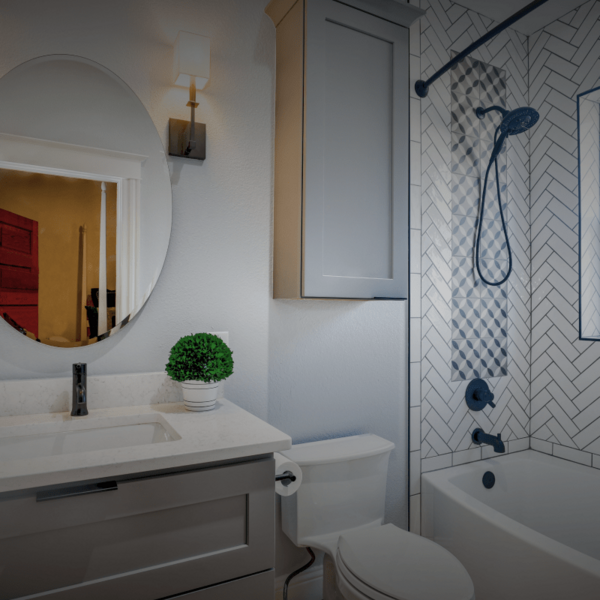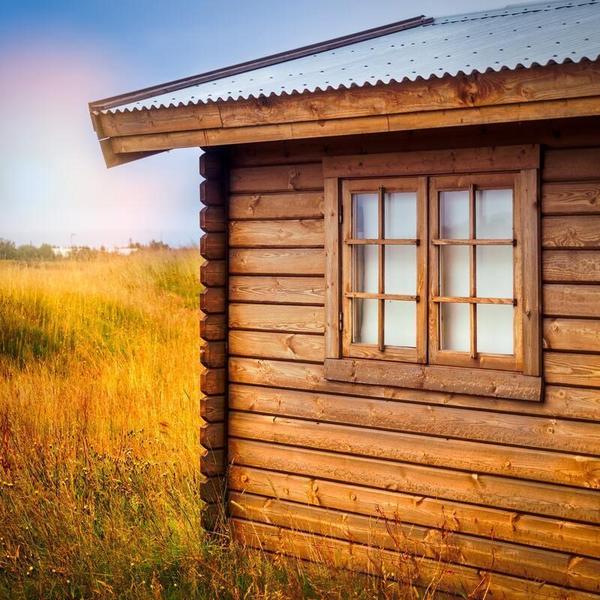Buying a tiny house is a great way to reduce your environmental footprint without compromising homeownership. Going tiny has its pros and cons, but it doesn’t always come cheap. Whether you pay for your tiny home upfront or apply for a personal RV loan, there are many tiny house financing options you should consider.
Can you get a tiny house mortgage?
When you’re buying a home, you usually need to get a mortgage. A mortgage is a type of secured loan that allows you to pay for a house that might cost hundreds of thousands of dollars slowly over a period of time that can go up to 30 years.
The problem is that traditional mortgage loans are often not available for tiny houses.
As Realtor Darren Robertson states, Many lenders set up minimum loan amounts that are higher than the cost of building or buying a tiny house ($30,000-$60,000), which disqualifies tiny homes from getting this type of loan.
Even if you hit the purchase price limit, some lenders require your tiny home to be built on a permanent foundation to qualify for a mortgage.
Last but not least, there might also be minimal square footage requirements to qualify for traditional loans.
To sum up, mortgage loans are ideal for traditional homes but not so much for tiny homes.
So, what options have you left?
5 realistic financing options for tiny houses
If you can’t qualify for a mortgage on a tiny house, there are other loan types that can help you land a dream tiny home.
For those interested in securing a tiny home, understanding various loan interest rates is crucial.
An SBA checklist can provide insights into the best options available, especially if your circumstances allow for different types of loans suitable for small business administration benefits.
-
Personal loan
For many people, a personal loan is a go-to option for securing financing for a tiny home. These loans are usually unsecured, which means they don’t hold anything as collateral.
Personal loans are a great option to pay off the cost of your tiny house quickly, but keep in mind that due to the short loan term, the monthly payments may be steep.
Of course, the rate you qualify for will depend on your credit. The annual percentage rate on personal loans might go anywhere between 3% and 36%, but only borrowers with decent credit scores will be able to offer low-interest rates.
Popular banks usually don’t advertise tiny house loans, but you still may be able to get one, especially if you have an excellent credit score.
-
RV loan
If your home wasn’t built on a permanent foundation and can be moved on its wheels or a trailer, you could finance it with a recreational vehicle loan. To qualify for this loan, your tiny house needs to be proven road worthy by the Recreation Vehicle Industry Association (RVIA) and needs to comply with the standards of the U.S. Department of Transportation’s National Highway Traffic Safety Administration.
On the other hand, to get an RV loan, some lenders require you to use your tiny home as a primary residence.
On the bright side, your tiny home doesn’t need to be built on a permanent foundation and the loan term is likely to be more manageable than with a personal loan.
Instead of paying everything in 7 years, which you would get with a personal loan, most banks offer terms up to 20 years and rates from 4.5% to 7.5%.
-
Contractor financing
If you’re building your tiny house, the contractor may be able to help you secure financing. As a matter of fact, there are companies that build tiny homes and offer loans for them.
While this sounds great, keep in mind that loans available through a tiny-home builder might be nothing more than other types of loans from this list.
For example, a company may build tiny homes and offer RV loan financing for them. These contractors are usually RVIA certified and sell their tiny homes as if they were an RV dealership.
In other words, do your homework and research the offers from lenders to make sure you’re getting the lowest interest rates. In many cases, you might get a better deal if not going through a middleman.
-
Pay with cash
Paying for a tiny home upfront in cash is definitely the best method of financing. If you can slide a suitcase full of cash across the table, there’s nothing to worry about loans and interest rates.
If you’re looking to pay less in the long run and avoid the risk of taking out loans, this option makes the most sense.
-
What about credit cards?
Technically you can charge the cost of your tiny home to a credit card, but this option has the worst repayment terms and we can’t recommend it.
First of all, you’d need to have a high enough balance to cover the cost of your tiny home, which is difficult unless you settle for the most inexpensive one.
Second, the interest rates for credit cards are among the highest of all other forms of financing.
And in the end, you’ll pay much more than the house is worth.
Things to know before financing your tiny house
Tiny houses are charming and more affordable alternatives to traditional housing, but there are some specifics you should know before you jump in with both feet.
You need the plot to build on
Whether it rests on a permanent foundation or not, you need land for your tiny house. But the land isn’t free so you’d probably have to finance a plot of land too - that is if you’re not building it on an existing property.
Finding financing for underdeveloped land can be tricky, and even if you find a way to pay for it, you need to consider local regulations.
Zoning regulations may stand in the way between what you’re allowed to build on the land and your plans for the tiny house.
Also, if there are no available utilities on the lot you’ve chosen, you’ll need a hookup for water and electricity.
Resale value is typically low
One of the reasons why lenders may refuse to finance tiny houses is because they have a low return on investment.
Many tiny houses are built on wheels and they depreciate in a similar way to cars and RVs. Besides that, wear and tear as well as maintenance is another thing that adds up costs related to buying a tiny house.
Regardless of where you get a loan or not, make sure you get a seller’s property disclosure before you make your purchase to ensure all damages are accounted for. If there’s damage, you may be able to get the home for cheaper.
You need something to move it with
If your tiny house isn’t built on a permanent foundation and you want to relocate it, you’ll need a larger vehicle like a truck to tow it to your next destination.
On the bright side, you can take your home almost anywhere across the country. So in a way, you get a mobile lifestyle and freedom in exchange for the cost associated with moving the house across long distances with a larger vehicle.
You can’t park it anywhere
You may choose to place your tiny home on a lot and never move it, or embrace mobile living and use your tiny house as an RV or camper.
Many campsites and trailer parks allow you to park on their grounds for an extended period of time, which is excellent for tiny home owners.
On the other hand, some campsites will turn tiny homes away, so you better do research on where you’re allowed to stay. Also, staying at campgrounds and parks involves daily, weekly, or monthly payments, which is often more expensive than renting an apartment - depending on your location and length of stay.
If you’re thinking about renting your tiny house, you can also consider a business loan which might come with different conditions. Popular banks usually don’t advertise tiny house loans, but you still may be able to get one, especially if you have an excellent credit score.
FAQ
Is it possible to get tiny home financing with bad credit?
Like for any loan, the best annual percentage rate (APR) is approved for borrowers with the best credit. There are lenders who offer bad credit personal loans, but if you’re in a bad credit situation, you should always try to improve your credit score before a loan application. At your request, each credit bureau will provide a free copy of your credit report.
Is a tiny house a good investment?
If you want to live in a tiny house and can afford loan payments, it could be a good investment. You may avoid paying mortgage payments, utilities, and upkeep. Sure, you can always sell a tiny house, but it’s less likely to build equity in the same way as traditional real estate.
Can I get a mortgage for a tiny house?
Probably not. Conventional mortgages are hard to get for tiny homes, mainly because of the mortgage minimums that are imposed on the value of the house. Instead, you should consider other loan products - manufacturer loans, long-term personal loans, and RV loans.
Wrapping up
Financing a tiny home the same way you’d secure a loan for a traditional home doesn’t really work.
Tiny houses are simply not expensive enough to pass the minimum mortgage loan requirements, plus there’s a problem of permanent vs. non-permanent foundation, and insufficient square footage.
Luckily, there are different tiny house financing options you can choose from.
You can apply for a personal loan, secure a loan for your mobile home as an RV, or choose contractors who are partners with lenders and finance the construction of your tiny house through their business.



